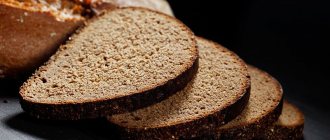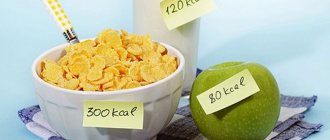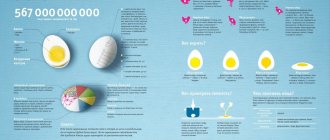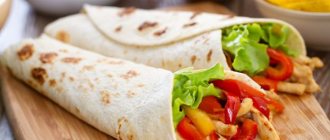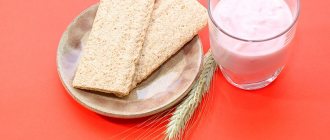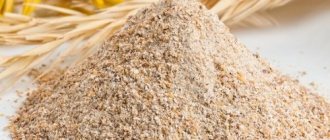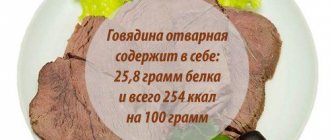Cottage cheese is a fermented milk product that is obtained by fermenting milk and removing the whey.
This product contains:
- casein is a valuable nutritious protein for the human body;
- minerals - strengthen bone tissue and enrich the body with substances necessary for normal functioning;
- amino acids - have a positive effect on liver function;
- B vitamins;
- lactic acid bacteria - improve digestion.
What else is cottage cheese good for?
In addition to calcium, this product is rich in a whole set of 12 vitamins: C, H, group B (B1, B2, B3, B5, B6, B9, B12), sulfur, phosphorus, potassium, magnesium, iron, zinc, selenium and other vital elements. It contains lactose, or milk sugar, and casein, a highly nutritious protein that, in its value, can easily replace animal protein. It is necessary to take into account that the fatter the cottage cheese, the less protein it contains. With 150 g of low-fat cottage cheese, you can nourish the body with 25 g of high-quality protein and 18-20% of the daily calcium requirement. The amino acids that cottage cheese is rich in strengthen the liver, and enzymes stimulate the digestion process.
Cottage cheese promotes hemoglobin synthesis and also improves the functioning of the nervous system. If you add berries or fruits, low-fat sour cream or honey to a fermented milk product, you will get an excellent breakfast that energizes a person.
Nutritionists recommend low-fat cottage cheese even for an evening meal, since casein helps not to feel hungry for several hours after eating it. Therefore, many people who are losing weight want to know how many calories are in low-fat cottage cheese. This is very important for people on a diet. Calculating the energy value of the daily diet helps them stay within their daily caloric intake.
Contraindications
It is prohibited to consume fermented milk products of animal origin in case of individual intolerance, allergic reactions to cow protein, atherosclerosis and serious kidney diseases.
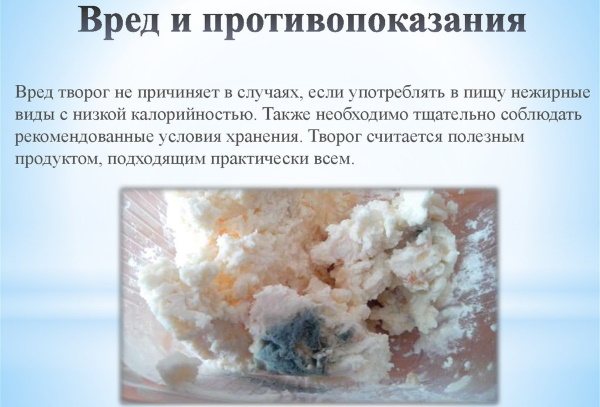
It is also worth considering expiration dates, storage conditions and freshness of the product, otherwise poisoning may not be avoided.
Types of cottage cheese
The main indicator that influences the classification and calorie content of cottage cheese is its fat content. There are 3 varieties of this product: fat (at least 18-23 percent), semi-fat - at least 5-9%, and low-fat, or “zero” - cottage cheese with a minimum amount of fat not exceeding the threshold of 0.1-1 ,8%. The most common fermented milk product is considered to be semi-fat cottage cheese (9%) with a calorie content of 165 kcal per 100 g of product. To feed people following a low-calorie menu, doctors recommend choosing a fermented milk product with a fat content of no more than 5% (142 kcal). Any buyer can get information about how many calories are in 100 g of cottage cheese only by carefully studying the product packaging.
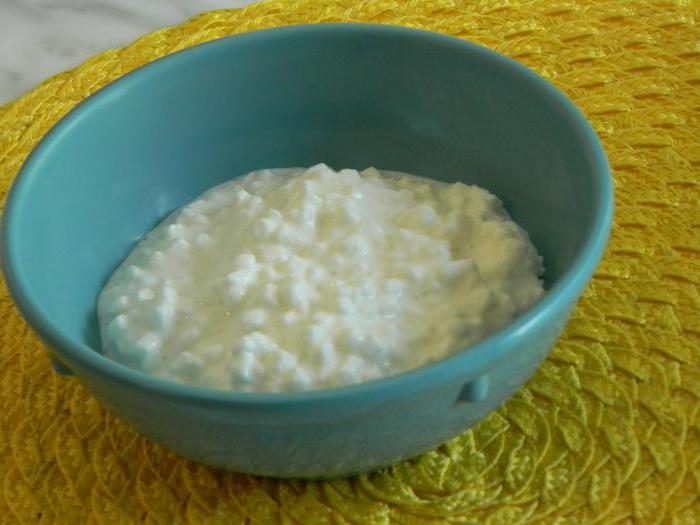
Any fatty, homemade or grainy cottage cheese is not suitable for feeding people who are losing weight. If five percent grain cottage cheese is produced with a calorie content of 105 kcal per 100 g of product, then grain cottage cheese with cream (9%) has 155 kcal for the same amount of edible part.
Benefit
And finally, let’s talk a little about the benefits of cottage cheese. The list of useful substances in different types is the same, but their absorbable proportion increases with fat content.
First of all, it is rich in calcium, essential for healthy and strong bones, nails and hair. In addition to it, the composition also includes other useful trace elements and minerals:
- iron,
- sodium,
- magnesium,
- zinc,
- copper,
- fluorine,
- phosphorus.
Well, even though dairy products are not regarded as a source of vitamins, they are present in them. In this case, these are vitamins B, A, E and P, which makes cottage cheese even more useful.
Everyone who is losing weight is interested in the question of how many calories are in low-fat cottage cheese
It is impossible to completely free “zero” cottage cheese from its most high-calorie component – fat. Nutritionists also object to this process because it may affect the digestibility of many elements of the product. Proponents of consuming fattier varieties of “young cheese” explain their preference precisely by their better digestibility and greater benefits. However, those who care about how many calories are in cottage cheese need to choose low-fat varieties. Typically, the energy value of “zero” cottage cheese ranges from 55-88 to 110 kcal per 100 g of product.
How many calories are in homemade cottage cheese: fatty or diet?
The energy value of homemade cottage cheese depends on the method of its preparation. If the product is made from fat milk, then its calorie content can reach 245 or even 290 kcal per 100 g of product.
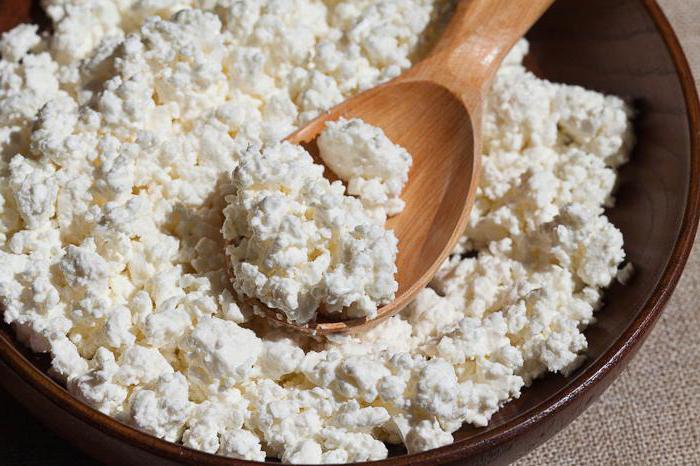
If farmers prepare low-fat cottage cheese, reducing the calorie content of milk during production, then the resulting product may contain only 145 kcal. How many calories are in homemade cottage cheese made from one percent milk? Approximately 166. At the same time, it contains 18 g of protein, 6 g of fat and 11 g of carbohydrates. These parameters correspond to the semi-fat 9% product in the store, which differs only in the carbohydrate content - 2 g.
When to expect an effect
How long the cottage cheese diet lasts is an individual choice. Real changes can be noticed already on the third day. But you can’t torture yourself to the point of fainting from hunger. After all, any diet will be effective if you supplement it with feasible physical activity, walking or regular gymnastics at home.
Contraindications for the diet apply to those who have allergic reactions to dairy products, kidney and liver diseases, and metabolic disorders. The diet should not be used by pregnant or lactating women, as well as adolescents under 18 years of age.
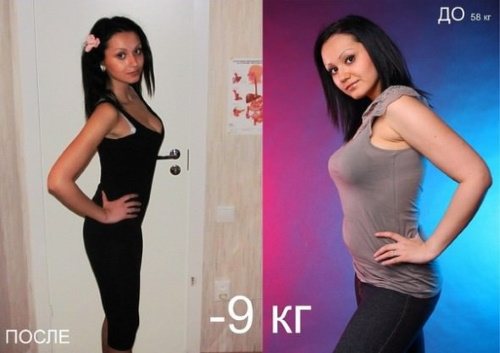
The success of any diet involves not only calculating calorie content per 100 grams, but also choosing quality products. Therefore, when purchasing homemade cottage cheese, it is important to know that a bitter taste will indicate low quality milk, and a sour taste indicates that the product is not fresh.
When the curd mass is hard, such curd was prepared in violation of technology, which means it does not contain useful vitamins and most microelements. If you rub the cottage cheese between your fingers, you will get an oily liquid that will roll into lumps. A low quality product will feel sticky to the touch.
Favorite dish: cottage cheese pancakes. How many calories?
Everyone who enjoys this delicious, nutritious dish wants to know how many calories are in cottage cheese pancakes. Should I give up such a treat while on a diet? Nutritionists advise anyone who adheres to a low-calorie diet not to get carried away with this fairly high-calorie food. The content of sugar, wheat flour, and butter can significantly increase the energy value of cheesecakes.
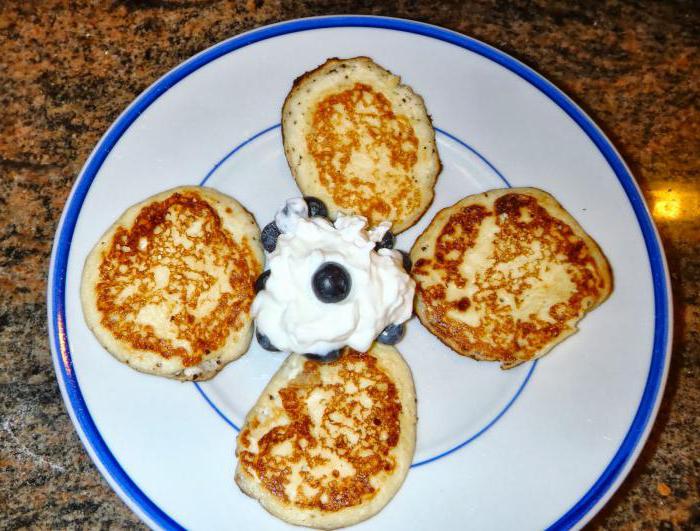
A morning “feast” of 2-3 favorite cottage cheese pancakes can cover more than 50% of your daily calorie intake! In order to reduce the nutritional value of this delicacy, experienced housewives choose ground oatmeal instead of white flour, remove sugar from the recipe or reduce the sweetness of the dish, add fresh berries, apples or pears, and a little vanillin instead of dried fruits (prunes or raisins). How many calories are in cottage cheese pancakes prepared this way? According to nutritionists, these changes in the recipe can reduce the calorie content of delicious cheesecakes from 300 kcal to 220 or even 180 kcal per 100 g of finished dish. If instead of frying with butter for low-fat cottage cheese cheesecakes, you use the oven baking method, you can achieve a noticeable reduction in energy value to 92 kcal per 100 g!
Menu for diet
The cottage cheese diet is a short diet designed to quickly lose a couple of extra pounds. Nutritionists do not recommend giving preference to low-fat cottage cheese when dieting and proper nutrition, since the body will not receive enough essential nutrients.
It is best to opt for a fermented milk product with 2 to 5% fat content. It is preferable to eat the treat in the first half of the day, or better yet, for breakfast, then the body will need at least two hours to digest the product.
Advantages and disadvantages
The obvious benefit of the cottage cheese diet is that it really works, since a sharp reduction in calories and giving up fast carbohydrates helps you easily lose weight in a short period. This diet is most often designed for a short period of time, from three to seven days. It is easy to follow and does not require complex recipes.
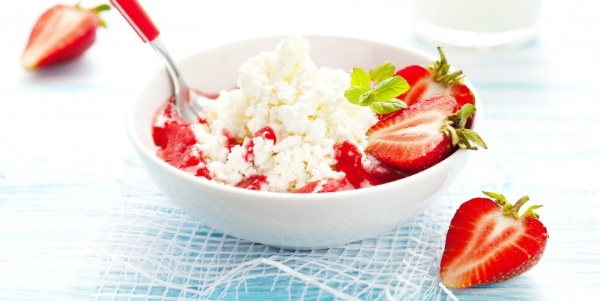
At the same time, a diet high in protein helps you feel fuller longer and reduces the likelihood of overeating. Like any dietary restriction, the cottage cheese diet has its drawbacks. If you eat only cottage cheese during the day, the body will not receive all the nutrients necessary for its normal functioning.
In the long term, low-calorie diets such as the cottage cheese diet can cause fatigue, nausea, a general feeling of weakness, loss of muscle tissue, which in turn provokes a slowdown in the body's metabolism and loss of cellular water balance.
Menu for the week
Cottage cheese (calorie content increases per 100 grams when adding fresh fruits, nuts or seeds) will help you lose a couple of extra pounds if you just need to fit into a little black dress for the holiday. To further enrich your diet with nutrients, you can diversify your diet with foods high in fiber.
It is also necessary to drink enough water or decoctions throughout the day. There are no official versions of cottage cheese diets; this implies a nutrition plan where you can eat cottage cheese with every meal for at least three days.
You should avoid alcohol, carbonated and sweetened drinks, and fruit juices. Today, the fermented milk product is successfully used in salads, baked dishes, confectionery, sandwiches, omelettes, salad dressings and baked goods. Cottage cheese can be combined with fish, meat, eggs, vegetables and mushrooms.
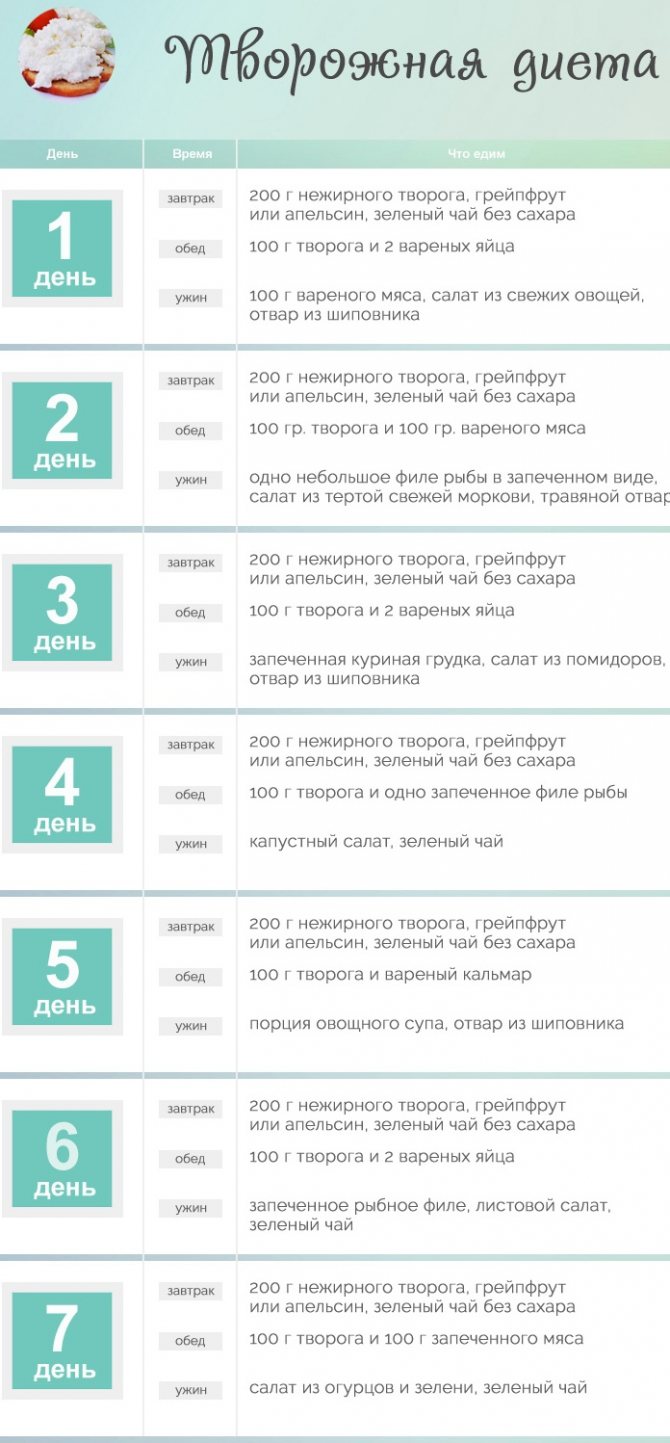
One of the cottage cheese diet options is shown in the table:
| № | Products | Description | Nutritional value, BJU/Kcal per 100 g of product |
| 1 day | Cottage cheese 260 g, lettuce 2 bunches, apples 2 pcs. | Using a blender, beat all ingredients, add 2 teaspoons of lemon juice, salt and pepper to taste. The finished sauce can be consumed with rye bread, potatoes - 100 g, ham - 160 g. | 8,14/8,91/4,92/133,41 |
| Day 2 | Baked cod fillet - 200 g, cottage cheese - 200 g, pickles - 100 g, chicken egg, potatoes - 300 g, parsley. | Cottage cheese mixed with parsley, finely chopped egg and pickles, eat three times a day with potatoes and fish | 9,69/2,61/14,84/124 |
| Day 3 | Cottage cheese - 200 g, grated cheese - 40 g, green peas - 100 g, cauliflower - 200 g, boiled carrots - 400 g, egg whites - 2 pcs. | Vegetables are cut into small pieces, laid out in a mold, and topped with a mixture of cottage cheese, grated cheese and egg whites. Baked in the oven for 30 minutes | 6,22/3,23/4,94/72,66 |
| 4 day | Cottage cheese - 200 g, grated cheese - 40 g, bread - 100 g. | The cheese is grated, seasoned with pepper and salt, mixed with cottage cheese and spread on bread. | 15,04/9,06/15,56/207,41 |
| 5 day | Cottage cheese - 300 g, strawberries - 200 g, lemon juice - 1 tbsp, muesli - 100 g. | Cut the strawberries, lay them out in layers: muesli, cottage cheese and berries. Sprinkle with lemon juice. | 10,29/5,65/14,66/149,71 |
| Day 6 | Cottage cheese - 250 g, yolks - 2 pcs, semolina - 0.5 cups, rhubarb root - 200 g, starch - 1 tbsp. | Mix cottage cheese with yolks, add semolina and egg whites. Pre-boil the chopped rhubarb for two minutes and add to the total mass. Bake the casserole in the oven for 30 minutes | 9,65/6/14,7/152,78 |
| Day 7 | Oatmeal - 300 g, cottage cheese - 150 g, apples - 2 pcs, banana - 1 pc. | Oatmeal can be mixed with cottage cheese and an apple or any other fruit. | 4,16/2,26/11,72/85,63 |
Curd breakfast with sour cream - a high-calorie blow to the waist?
The method of preparing a dietary breakfast of cottage cheese with sour cream has a significant impact on its energy value. How many calories are in cottage cheese with sour cream - one of the most favorite morning breakfasts for children and many of those who watch their weight? To calculate the calorie content of a practical, tasty and healthy breakfast, it is necessary to take into account the fat content of the sour cream used: 10-15% product contains 100-110 kilocalories, and 35% sour cream – 350-375 kcal!
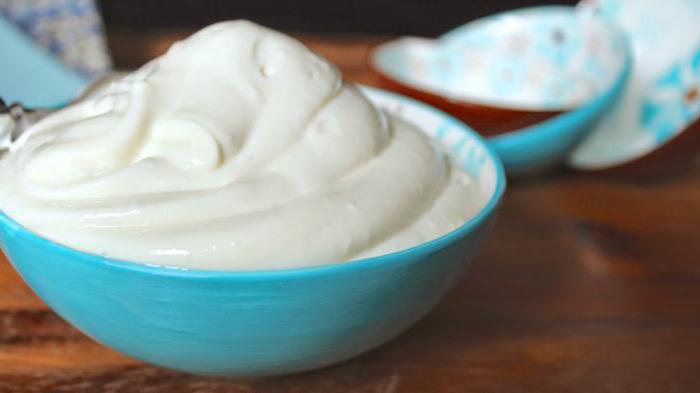
You also need to pay attention to how many calories are in the cottage cheese that you will combine with sour cream: low-fat (55-110 kcal) or semi-fat 5% product (145-155 kcal). In addition, by using fillers - nuts, dried fruits, honey, jam or sugar, the cook significantly increases the calorie content of the finished dish. If low-fat cottage cheese with 10-15% sour cream for breakfast can provide 250-270 kcal, then a full-fledged dessert with nuts, honey and dried fruits can cover a third of the daily amount of required calories.
Low-fat cottage cheese: pros and cons
Dishes with “zero” cottage cheese are the main companions of everyone who makes a firm decision to lose weight. Low-fat cottage cheese with reduced calorie content for breakfast can provide quick relief from extra pounds, but can lead to decreased performance, lethargy and apathy. If you use “zero” cottage cheese as a main dish, then you need to mix it with honey, berries or fruits. This way you can feel full and recharge your energy faster. At the same time, a full meal will speed up metabolism, which is very important when losing weight.
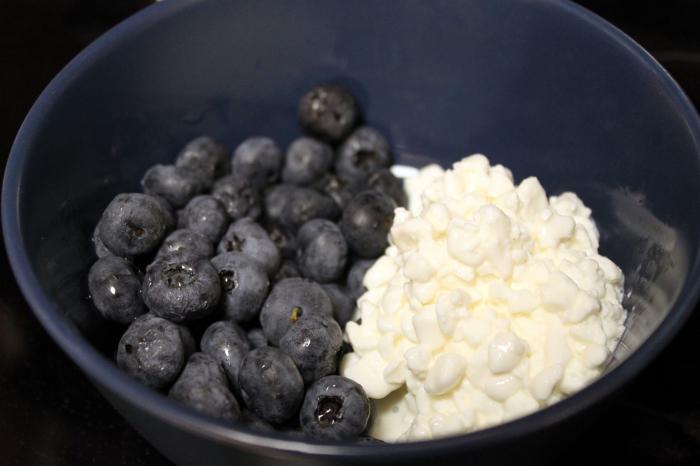
In addition, you should definitely include some meat or fish in your daily diet to compensate for the body's need for fat. This will give you strength and help with concentration. When purchasing your favorite fermented milk product, you need to pay attention not only to how many calories are in the cottage cheese, but also to the presence of additives in it. Various E (preservatives, antioxidants, stabilizers), flavorings and sweeteners make cottage cheese taste more pleasant, but significantly increase its calorie content and harm the body. It will be much healthier to mix low-fat cottage cheese with berries, fruits, honey or jam.
For many people losing weight, the question remains: “Is low-fat cottage cheese a nighttime snack?” The opinions of nutritionists on this matter are diametrically opposed. Some claim that casein protein will help block hunger throughout the night, while others advise using cottage cheese for breakfast or an afternoon snack, and in the evening satisfying hunger with an apple or kefir. The final decision whether to consume “zero” cottage cheese in the evening is made by dieters independently, in accordance with the results of weight loss and their well-being. A careful study of the composition of the product, its calorie content and production time will help you competently create your daily menu, as well as enjoy a tasty and incredibly healthy product!
